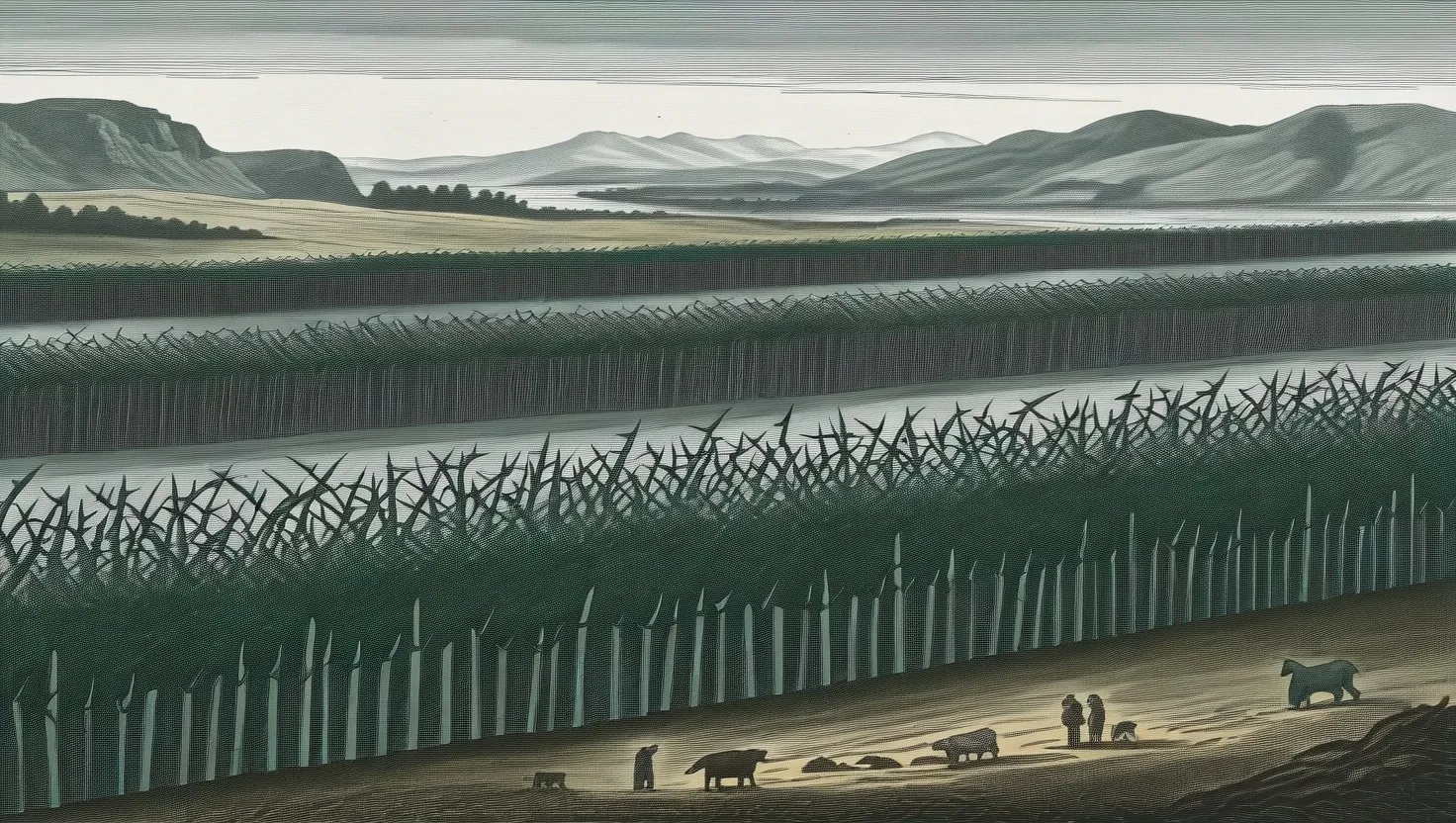In the vast and complex tapestry of colonial history, there are stories that stand out for their sheer scale and the profound impact they had on the lives of millions. One such story is that of the Great Hedge of India, a monumental yet largely forgotten barrier that once stretched across the Indian subcontinent.
Imagine a thorny, impenetrable hedge, over 2,300 miles long, stretching from the Indus River in the northwest to the Mahanadi River in the southeast. This was not a natural phenomenon, but a deliberate creation of the British colonial rulers, designed to enforce one of the most draconian taxes in their empire: the salt tax.
The salt tax was a cornerstone of British colonial policy in India, and its impact was devastating. Salt, an essential commodity for human survival, was heavily taxed, making it unaffordable for many Indians. This tax was not just a financial burden; it had severe health consequences, particularly in regions where salt was scarce. The lack of salt led to widespread health issues, including dehydration and other salt-deficiency diseases.
To ensure the collection of this tax, the British established the Inland Customs Line, a massive customs barrier that included the Great Hedge of India. This hedge was more than just a physical barrier; it was a symbol of colonial control and exploitation. The line was initially made of dead, thorny material but eventually evolved into a living hedge, grown from local plants like the Indian plum, babool trees, and prickly pear.
The construction of the hedge was a monumental task that required immense resources and labor. It involved digging ditches, bringing in better soil, and building embankments to resist floods. The British experimented with various local plants to find the best ones for each climate, ensuring the hedge’s survival and effectiveness. Each mile of the hedge required 250 tons of thorny brushwood and other organic material, and in some years, the patrols carried over 100,000 tons of this material to maintain the barrier.
The hedge was guarded by nearly 12,000 men and petty officers, who patrolled the line in sections. It was an imposing structure, often 10 feet tall and 6 feet thick, and in some areas, it grew even bigger. Despite its grandeur, the hedge was only partially successful in stopping smugglers. There were gaps where plants could not grow, and smugglers found creative ways to bypass the barrier, such as using the trees as ladders or throwing sacks of salt over the top.
The human cost of this project was staggering. The salt tax and the Great Hedge of India contributed to state-sponsored famines and health crises that killed millions of people. The tax was so oppressive that it became a major factor in the economic and social suffering of the Indian population. The British exploited geographic differences by heavily taxing salt in areas they controlled, making it impossible for desperate residents to access cheaper salt from other regions.
The story of the Great Hedge of India also highlights the environmental impact of colonial policies. The construction and maintenance of the hedge involved significant alterations to the natural landscape. Ditches were dug, and embankments were built, disrupting local ecosystems and water flows. The hedge itself, while intended to be a permanent barrier, was subject to the whims of nature – withering in arid places, being swept away by floods, and struggling to grow in poor soil.
Despite its massive scale and the resources invested in it, the Great Hedge of India eventually disappeared from historical memory. By 1879, the British decided to abandon the hedge, finding it no longer necessary once they had unified control over India. The labor and money that went into maintaining the hedge seemed wasteful, and the barrier was gradually replaced by roads, housing, and farms. Natural forces and human activities eventually erased this living monument from the landscape.
The discovery of the Great Hedge of India’s existence is a fascinating tale in itself. British writer Roy Moxham stumbled upon a mention of the hedge in an old diary and spent years searching for evidence of its existence. His quest took him across rural India, where he encountered blank looks and disbelief when he mentioned the 2,300-mile-long hedge. Moxham’s search was a journey into a forgotten chapter of history, revealing the dark underbelly of colonial administration and the capacity of humans to forget the most significant and cautionary tales of their past.
Today, the Great Hedge of India serves as a poignant reminder of the far-reaching consequences of colonial policies. It is a story of how taxation can shape landscapes and societies in profound ways, often with devastating results. This forgotten wonder of the 19th century is more than just a historical footnote; it is a testament to the enduring impact of human actions on the environment and on the lives of people.
As we reflect on this chapter of history, we are reminded of the importance of remembering and learning from the past. The Great Hedge of India may be gone, but its legacy lives on, a stark reminder of the power dynamics and exploitation that defined colonial rule. It is a story that should not be forgotten, for in understanding it, we gain a deeper insight into the complexities of human history and the ongoing impact of colonialism on modern societies.






